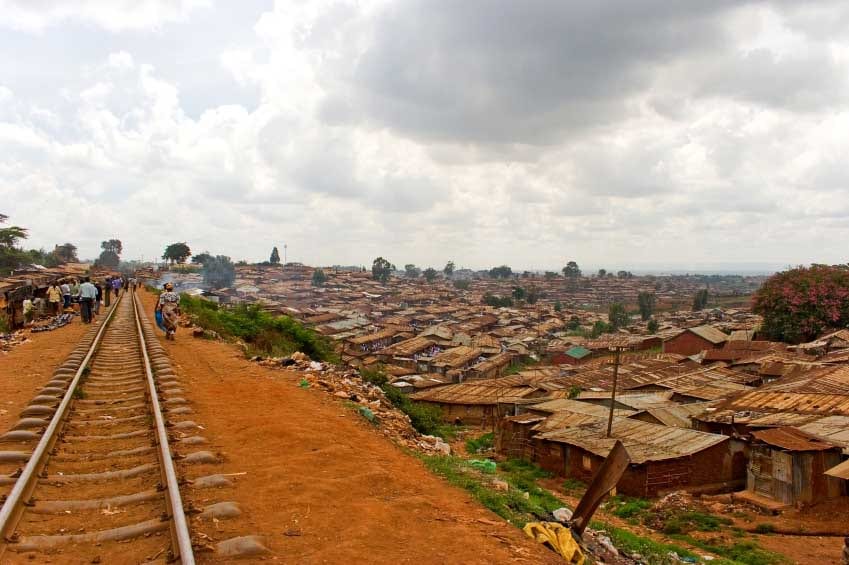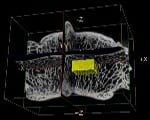Award recognizes a foreign geoscientist for significant contribution to Italian geology
| BRIEFLY: Italian geologists in September will award the Capellini Medal to SMU scientist James E. Quick, recognizing discovery of an enormous 280 million-year-old fossil supervolcano in the Italian Alps.
The discovery has sparked worldwide scientific interest and a budding regional geotourism industry. Quick led scientists from the University of Trieste to make the discovery. “There will be another supervolcano explosion. We don’t know where,” Quick says. “Sesia Valley could help us to predict the next event.” |
 |
| SMU geologist James E. Quick in Italy. |
Italian geologists in September will award the Capellini Medal to Southern Methodist University scientist James E. Quick, recognizing the discovery of an enormous 280 million-year-old fossil supervolcano in the Italian Alps with its magmatic plumbing system exposed to an unprecedented depth of 25 kilometers.
The discovery has sparked not only worldwide scientific interest but also a budding regional geotourism industry.
Quick and his colleagues at the University of Trieste — Silvano Sinigoi, Gabriella Peressini, Gabriella Dimarchi and Andrea Sbisa — discovered the unique fossil supervolcano in northern Italy’s picturesque Sesia Valley.
The Italian Geological Society, Italy’s oldest professional organization for geologists, awards its Capellini Medal to foreign geoscientists for a significant contribution to Italian geology.
Quick, who is a professor in the SMU Roy M. Huffington Department of Earth Sciences, will be the second recipient of the award.
Supervolcanoes, also referred to as calderas, are enormous craters tens of kilometers in diameter produced by rare and massive explosive eruptions — among nature’s most violent events. Their eruptions are sparked by the explosive release of gas from molten rock, or magma, as it pushes its way to the Earth’s surface.
The eruptions — which spew hundreds to thousands of cubic kilometers of volcanic ash — generate devastation on a regional scale, possibly even triggering extreme climatic and environmental fluctuations on a global scale.
Rare uplift reveals supervolcano plumbing
The Sesia Valley fossil supervolcano lies near the villages of Gattinara and Borgosesia in northern Italy, a rural area known for fine textiles and fine wine — and increasingly the giant caldera.
As a result of the uplift of the Earth’s crust that formed the Alps, the Sesia Valley fossil reveals the never-before-seen “plumbing” of a supervolcano from the surface to the source of the magma deep within the Earth, says Quick.
The uplift reveals to an unprecedented depth of 25 kilometers rocks formed by the magma as it moved through the Earth’s crust. The Sesia Valley caldera will advance scientific understanding of active supervolcanoes, such as Yellowstone in the United States, which is the second-largest supervolcano in the world, Quick says. Yellowstone last erupted 630,000 years ago.
Sesia Valley’s caldera erupted during the “Permian” geologic time period 280 million years ago, says the discovery team. The caldera is more than 13 kilometers in diameter.
Capellini Medal recognizes scientific exchange
The Capellini Medal is named for Giovanni Capellini, founder and five-time president of the Geological Society of Italy and strong advocate of international scientific exchange.
Quick will accept the Capellini Medal at the Italian Geological Society’s annual meeting Sept. 6-8 in Pisa. On Sept. 6 he will make a scientific presentation about the discovery to society members at the conference.
“What’s new is to see the magmatic plumbing system all the way through the Earth’s crust,” says Quick, who previously served as program coordinator for the Volcano Hazards Program of the U.S. Geological Survey. “Now we want to start to use this discovery. We want to understand the fundamental processes that influence eruptions: Where are magmas stored prior to these giant eruptions? From what depth do the eruptions emanate?”
A key to understanding active calderas
Sesia Valley’s unprecedented exposure of magmatic plumbing provides a model for interpreting geophysical profiles and magmatic processes beneath active calderas. The exposure also serves as direct confirmation of the cause-and-effect link between molten rock from the mantle invading Earth’s deep crust and explosive volcanism.
“It might lead to a better interpretation of monitoring data and improved prediction of eruptions,” says Quick. He is lead author of the scientific article that reported the discovery, “Magmatic plumbing of a large Permian caldera exposed to a depth of 25 km.,” which appeared in the journal “Geology.”
Calderas, which typically exhibit high levels of seismic and hydrothermal activity, often swell, suggesting movement of fluids beneath the surface.
“We want to better understand the tell-tale signs that a caldera is advancing to eruption so that we can improve warnings and avoid false alerts,” Quick says.
“Rosetta Stone” for supervolcanoes may help predict next explosion
To date, scientists have been able to study exposed caldera “plumbing” from the surface of the Earth to a depth of only about 5 kilometers. Because of that, scientific understanding has been limited to geophysical data and analysis of erupted volcanic rocks. Quick likens the relevance of Sesia Valley to seeing bones and muscle inside the human body for the first time after previously envisioning human anatomy on the basis of a sonogram only.
“We think of the Sesia Valley find as the ‘Rosetta Stone’ for supervolcanoes because the depth to which rocks are exposed will help us to link the geologic and geophysical data,” Quick says. “This is a very rare spot. The base of the Earth’s crust is turned up on edge. It was created when Africa and Europe began colliding about 30 million years ago and the crust of Italy was turned on end.”
Besides Yellowstone, other monumental explosions have included Lake Toba on Indonesia’s Sumatra island 74,000 years ago, which is believed to be the largest volcanic eruption on Earth in the past 25 million years.
Described as a massive climate-changing event, the Lake Toba eruption is thought to have killed an estimated 60 percent of humans alive at the time.
Another caldera, and one that remains active, Long Valley in California erupted about 760,000 years ago and spread volcanic ash for 600 cubic kilometers. The ash blanketed the southwestern United States, extending from California to Nebraska.
“There will be another supervolcano explosion. We don’t know where,” Quick says. “Sesia Valley could help us to predict the next event.”
Quick is also SMU’s associate vice president for research and dean of graduate studies. — Margaret Allen
SMU has an uplink facility located on campus for live TV, radio, or online interviews. To speak with James Quick or to book a live or taped interview in the studio, call SMU News & Communications at 214-768-7650 or email news@smu.edu.






